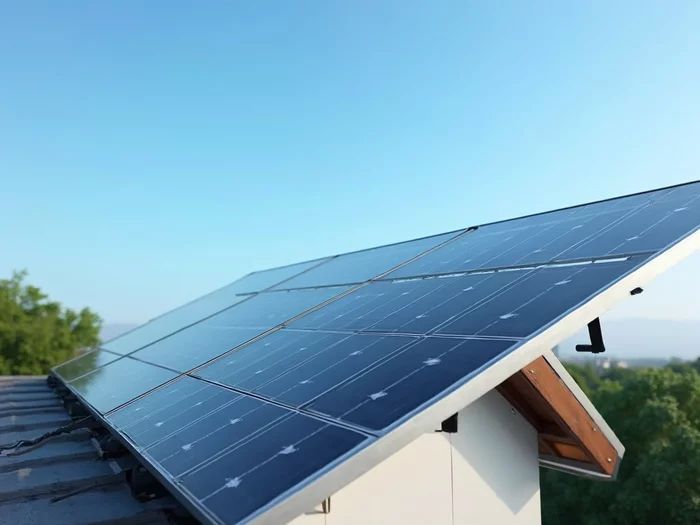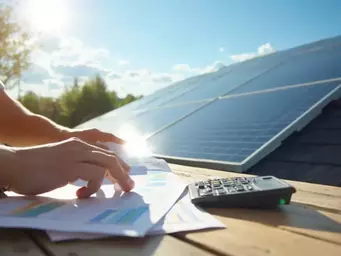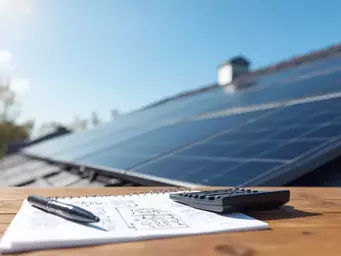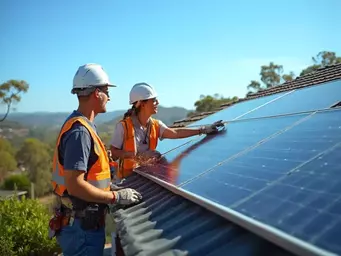Efficiency & Longevity
- Maximizes sunlight exposure
- Reduces future maintenance costs
- Protects against harsh weather
Solar Orientation
- Optimal panel direction (N/S)
- Adjustable tilt for year-round capture
- Avoids shade from obstructions
Unlock expert insights on solar panel installation, energy savings, and government rebates for Australian homes and businesses. Join our community of informed solar enthusiasts!
Posted on: 2025-10-10
By: Evelyn Tran
As you consider the installation of solar panels, it's crucial to understand the foundational role that mounting structures play in optimizing performance. These structures not only secure your panels but also influence their efficiency and durability. Here’s what you will learn about making informed choices when selecting a solar panel mounting system.
Selecting the right mounting structure is crucial for your solar system's efficiency and longevity. Below are key considerations, categorized by their influence.
When diving into the world of solar energy, one of the first concepts to grasp is the solar panel mounting structure. This essential component plays a crucial role in the overall efficiency and longevity of your solar system. Essentially, these structures hold your solar panels securely in place, optimizing their performance and ensuring they withstand various environmental conditions.
As a seasoned solar energy consultant at Longi Solar Solutions, I've seen firsthand how the right mounting structure can make all the difference. Not only does it impact energy production, but it also affects installation costs and the system’s durability.
A solar panel mounting structure is a framework that supports solar panels, allowing them to be securely positioned to capture sunlight. These structures can be categorized into several types, depending on where and how they are installed. Common types include roof mounts, ground mounts, pole mounts, and even carport mounts!
Each type serves specific needs, and understanding these differences is vital for making an informed choice. At Longi Solar Solutions, we guide you through selecting the right option based on your unique circumstances.
The selection of a mounting structure is not just about aesthetics; it significantly influences your solar system's efficiency and longevity. The wrong choice can lead to issues like increased wear and tear or inefficient energy capture. Here are some reasons why this choice is critical:
It's essential to consider these factors as they can save you time, money, and frustration in the long run.
Solar orientation, or the positioning of your panels relative to the sun, is another critical factor in mounting structure selection. The angle and direction at which panels are mounted can significantly affect how much energy they produce!
For optimal performance, consider the following:
At Longi Solar Solutions, we emphasize the importance of solar orientation in our consultations, helping you decide how to achieve the best results for your solar installation.
Did you know? Selecting a mounting structure that allows for adjustability can significantly enhance your solar system's performance over time. Structures that can be tilted or repositioned as the sun's angle changes throughout the year will maximize sunlight capture, leading to greater energy production and savings on your energy bills!
The main types include rooftop mounts (installed on building roofs), ground mounts (fixed structures on the ground), pole mounts (elevated systems with adjustable angles), and carport mounts (structures that shelter vehicles while generating power).
A well-chosen mounting structure maximizes sunlight exposure by allowing optimal orientation and tilt adjustment. This ensures panels capture more sunlight throughout the day and year, leading to higher energy production and better overall system efficiency.
Site assessment is crucial for evaluating factors like land availability, local climate conditions (e.g., wind, snow loads), potential shading from obstructions, and local building regulations. This assessment ensures the chosen mount is suitable for the environment and complies with all requirements, optimizing performance and durability.
Cost considerations include the initial investment in materials and installation, as well as potential long-term savings. A durable and properly installed mounting structure can reduce future maintenance costs and enhance the system’s longevity, contributing to better overall cost-effectiveness over its lifespan.
Solar orientation dictates how panels are positioned relative to the sun. Optimal orientation (e.g., facing true north or south) and adjustable tilt angles are essential for maximizing sunlight capture throughout the year. The mounting structure must facilitate this positioning while avoiding shade from nearby obstructions.
As we wrap up our discussion on solar panel mounting structures, it’s essential to keep in mind the key factors that will help you make the right decision. Choosing the correct mounting structure is not just about aesthetics; it significantly influences the performance and longevity of your solar system. Here’s a quick recap of what to consider:
Remember, the right mounting structure can make a significant difference in how effectively your solar energy system works. Each type has unique advantages, so reflect on your specific situation to find the best match!
When considering solar panel installation, thinking about cost, durability, and local factors is crucial. The initial investment might seem daunting, but understanding the long-term benefits can help alleviate those concerns. Incorporating durable materials ensures that your system stands up to the elements and lasts for years. Additionally, researching available local incentives can offset some of the costs, making solar energy an even more accessible choice for many homeowners and businesses.
Local climate conditions play a vital role too! For example, if you live in a windy area, you’ll want a mounting structure designed to withstand high winds. Be sure to factor these elements into your decision-making process.
Now that you have a solid understanding of the factors involved in choosing a solar panel mounting structure, it’s time to take action. One effective way to clarify your options is to create a decision matrix tailored to your specific needs. This visual tool can help you weigh the pros and cons of various mount types based on criteria such as cost, durability, and site conditions.
This tailored approach will give you clarity as you move forward with your solar journey!
As you refine your options, I highly recommend consulting with experts in the field or requesting quotes from various vendors, like us at Longi Solar Solutions. We are here to assist you in navigating the complexities of solar installation. Having professional insights can provide invaluable information on what works best for your specific location and situation.
Don’t hesitate to ask questions about the products and services available to you. The more informed you are, the more confident you’ll feel in your decisions!
Finally, take the time to assess warranties and customer reviews. A solid warranty can safeguard your investment, ensuring that you’re covered in case of unexpected issues. Additionally, reading reviews from other customers can offer a glimpse into the performance and reliability of different mounting structures.
With the right information and a bit of research, you’ll be well-equipped to make decisions that will last for years to come. At Longi Solar Solutions, we’re committed to supporting you through every step of your solar journey! Let's make solar energy work for you!
Here is a quick recap of the important points discussed in the article:

 Ready to unlock the potential of solar energy for your home? Understanding the financial landscape o
Ready to unlock the potential of solar energy for your home? Understanding the financial landscape o
 As you contemplate the shift to solar energy, consider this: a comprehensive understanding of the co
As you contemplate the shift to solar energy, consider this: a comprehensive understanding of the co
 Choosing the right solar installer can significantly impact your renewable energy journey. Are you r
Choosing the right solar installer can significantly impact your renewable energy journey. Are you r